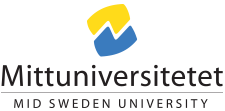Disputation i kemiteknik med Amanda Mattsson

Välkommen till disputation i kemiteknik med Amanda Mattsson, forskningscentrum FSCN.
Avhandlingens titel
Characterisation of Time-dependent Statistical Failure of Fibre Networks
Applications for Light-weight Structural Composites
Handledare
Professor Tetsu Uesaka
Dr Christina Dahlström
Extern granskare
Professor Sören Östlund
Examinationskommitté
Professor Douglas W Coffin
Professor Per Gradin
Docent Rickard Hägglund
Hämta Sammanfattning / Abstract som PDFLyssna
Abstract
The future of a sustainable society requires that materials not only be renewable, but also leave as small a carbon foot-print in the environment as possible. One such product is light-weight composite material for transportation packages. Cellulose fibres have been and will continue to be ideal for this purpose.
The strength design of light-weight composites is becoming increasingly important. The challenge is to neither over- nor under-design, but instead to target the right strength under realistic loading conditions. The question then is: What is right strength? Under realistic loading conditions (e.g., fatigue, random loading, and creep), materials fail differently from what one expects from tests of static strength: materials often fail at much lower stresses than are measured in these tests, the failure is time-dependent, and time to failure is highly variable.
Therefore, to answer the above question, we have set up the following objectives: (1) Theoretically formulate time-dependent statistical failure (TSF), and examine the validity of the model; (2) Define material parameters describing the multi-faceted strength characteristics based on this formulation; (3) Develop an experimental method to determine the material parameters; (4) Investigate the impacts of fibre properties and network structures; and finally (5) Characterise containerboard (the fibre material used in corrugated boxes) samples in terms of the new parameters. The results for these five objectives are presented below, one by one.
(1) A general formulation of TSF, originally proposed by Coleman [1] for fibre failures, has been used. We have found that this model is indeed valid, even at the fibre network level, with only two restrictions: the existence of a lower bound on weakest-link scaling and an approximate nature of the Weibull distribution.
(2) Accordingly, we have defined three material parameters that characterise different aspects of material strength: short-term strength, durability/brittleness, and reliability. We call these parameters the new strength metrics.
(3) Although the newly defined material parameters are most comprehensive, it takes up to several months to determine them by using creep tests. We have developed a new method, using constant-loading rate (CLR) tests, that not only gives values comparable to those from creep tests, but also requires only about one day, allowing a drastic reduction in the testing time.
(4) Monte-Carlo simulations of lattice networks have been performed to determine the basic relationships between fibre properties and network failures. The brittleness of an individual fibre (or a breaking element) influenced both brittleness and reliability of the fibre network, the higher the brittleness, the lower the reliability. Reliability, on the other hand, exhibited more intricate relationships with fibre properties and network structures. Several important analytical relationships have been derived.
(5) Finally, using the CLR tests, we have characterised commercial containerboards in terms of the new strength metrics. Containerboard, as a cellulose fibre network, is quite comparable to typical stiff polymer-based fibre composites (e.g., glass fibres and aramid fibres). However, the reliability and durability/brittleness of containerboard varied considerably within the operating windows, suggesting ample opportunities to fine-tune these properties even using current papermaking practices.
The fact that the multi-faceted nature of strength can be expressed by three parameters is remarkable, and the implications are profound for how materials are designed and new materials developed. It is the author's hope that this thesis will be of some use when it comes to redefining materials for a sustainable society, particularly the renewable alternative - cellulose fibres.
